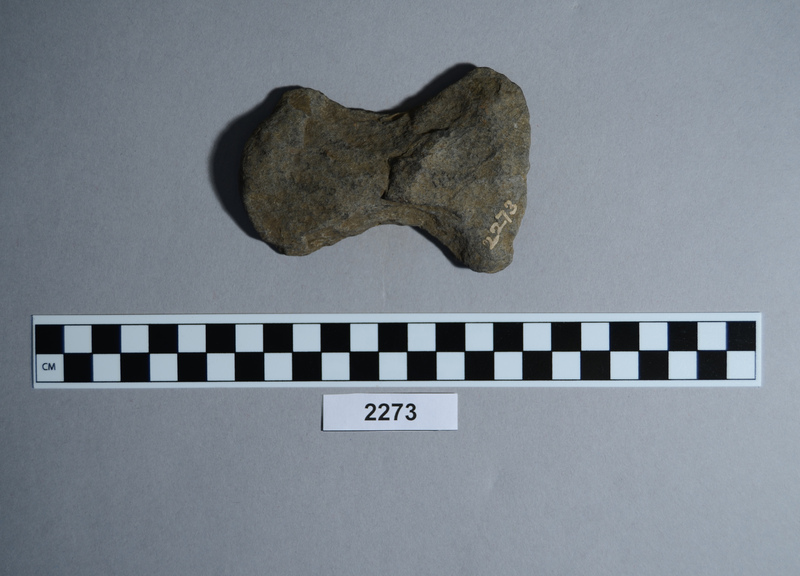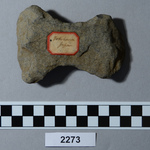Adze
2273
From: Japan | Honshu | Kanagawa Prefecture | Yokohama
Curatorial Section: Asian
| Object Number | 2273 |
| Current Location | Collections Storage |
| Culture | Jomon | Japanese |
| Provenience | Japan | Honshu | Kanagawa Prefecture | Yokohama |
| Period | Jomon |
| Date Made | Jomon |
| Section | Asian |
| Materials | Stone |
| Technique | Flaked | Chipped |
| Inscription Language | English Language |
| Description | Adze. Bowtie shaped. Thicker at one end. Flat on one side. Bifacially chipped. Dark in color. Unground adzes may have been used as a hoe for digging and harvesting roots, bulbs and other wild plants. They could also have served as a woodworking tool. They were made from pebbles which were carefully selected for their shape. The cutting edge was created by chipping at either one or both sides to form a sharp edge. The opposite end is usually thicker. Unground adzes are associated with the Late Paleolithic Period. However, rough stone tools also appear in Jomon sites in a variety of shapes. A form that can be described as bowtie shape seems to be particular to Jomon Period stone adzes. For example one Middle Jomon site with this type of adze is Maehara, Koganei city In Kokubunji-cho, Tokyo a Late Jomon site revealed adzes including this same form. 2273 and 13150 are Jomon Period, possibly Middle or Late Jomon. |
| Credit Line | Gift of Francis C. Macauley, Esq., 1890 |
| Other Number | None - Field No SF | None - Other Number |
Report problems and issues to digitalmedia@pennmuseum.org.



